Karel Horak
Multi-Unit Floor Plan Recognition and Reconstruction Using Improved Semantic Segmentation of Raster-Wise Floor Plans
Aug 02, 2024



Abstract:Digital twins have a major potential to form a significant part of urban management in emergency planning, as they allow more efficient designing of the escape routes, better orientation in exceptional situations, and faster rescue intervention. Nevertheless, creating the twins still remains a largely manual effort, due to a lack of 3D-representations, which are available only in limited amounts for some new buildings. Thus, in this paper we aim to synthesize 3D information from commonly available 2D architectural floor plans. We propose two novel pixel-wise segmentation methods based on the MDA-Unet and MACU-Net architectures with improved skip connections, an attention mechanism, and a training objective together with a reconstruction part of the pipeline, which vectorizes the segmented plans to create a 3D model. The proposed methods are compared with two other state-of-the-art techniques and several benchmark datasets. On the commonly used CubiCasa benchmark dataset, our methods have achieved the mean F1 score of 0.86 over five examined classes, outperforming the other pixel-wise approaches tested. We have also made our code publicly available to support research in the field.
Computer Vision Approaches for Automated Bee Counting Application
Jun 13, 2024



Abstract:Many application from the bee colony health state monitoring could be efficiently solved using a computer vision techniques. One of such challenges is an efficient way for counting the number of incoming and outcoming bees, which could be used to further analyse many trends, such as the bee colony health state, blooming periods, or for investigating the effects of agricultural spraying. In this paper, we compare three methods for the automated bee counting over two own datasets. The best performing method is based on the ResNet-50 convolutional neural network classifier, which achieved accuracy of 87% over the BUT1 dataset and the accuracy of 93% over the BUT2 dataset.
Varroa destructor detection on honey bees using hyperspectral imagery
Mar 21, 2024Abstract:Hyperspectral (HS) imagery in agriculture is becoming increasingly common. These images have the advantage of higher spectral resolution. Advanced spectral processing techniques are required to unlock the information potential in these HS images. The present paper introduces a method rooted in multivariate statistics designed to detect parasitic Varroa destructor mites on the body of western honey bee Apis mellifera, enabling easier and continuous monitoring of the bee hives. The methodology explores unsupervised (K-means++) and recently developed supervised (Kernel Flows - Partial Least-Squares, KF-PLS) methods for parasitic identification. Additionally, in light of the emergence of custom-band multispectral cameras, the present research outlines a strategy for identifying the specific wavelengths necessary for effective bee-mite separation, suitable for implementation in a custom-band camera. Illustrated with a real-case dataset, our findings demonstrate that as few as four spectral bands are sufficient for accurate parasite identification.
Raspberry Pi Bee Health Monitoring Device
Apr 27, 2023Abstract:A declining honeybee population could pose a threat to a food resources of the whole world one of the latest trend in beekeeping is an effort to monitor a health of the honeybees using various sensors and devices. This paper participates on a development on one of these devices. The aim of this paper is to make an upgrades and improvement of an in-development bee health monitoring device and propose a remote data logging solution for a continual monitoring of a beehive.
Towards Phytoplankton Parasite Detection Using Autoencoders
Mar 15, 2023Abstract:Phytoplankton parasites are largely understudied microbial components with a potentially significant ecological impact on phytoplankton bloom dynamics. To better understand their impact, we need improved detection methods to integrate phytoplankton parasite interactions in monitoring aquatic ecosystems. Automated imaging devices usually produce high amount of phytoplankton image data, while the occurrence of anomalous phytoplankton data is rare. Thus, we propose an unsupervised anomaly detection system based on the similarity of the original and autoencoder-reconstructed samples. With this approach, we were able to reach an overall F1 score of 0.75 in nine phytoplankton species, which could be further improved by species-specific fine-tuning. The proposed unsupervised approach was further compared with the supervised Faster R-CNN based object detector. With this supervised approach and the model trained on plankton species and anomalies, we were able to reach the highest F1 score of 0.86. However, the unsupervised approach is expected to be more universal as it can detect also unknown anomalies and it does not require any annotated anomalous data that may not be always available in sufficient quantities. Although other studies have dealt with plankton anomaly detection in terms of non-plankton particles, or air bubble detection, our paper is according to our best knowledge the first one which focuses on automated anomaly detection considering putative phytoplankton parasites or infections.
Machine Learning and Computer Vision Techniques in Bee Monitoring Applications
Jul 29, 2022



Abstract:Machine learning and computer vision are dynamically growing fields, which have proven to be able to solve very complex tasks. They could also be used for the monitoring of the honeybee colonies and for the inspection of their health state, which could identify potentially dangerous states before the situation is critical, or to better plan periodic bee colony inspections and therefore save significant costs. In this paper, we present an overview of the state-of-the-art computer vision and machine learning applications used for bee monitoring. We also demonstrate the potential of those methods as an example of an automated bee counter algorithm. The paper is aimed at veterinary and apidology professionals and experts, who might not be familiar with machine learning to introduce to them its possibilities, therefore each family of applications is opened by a brief theoretical introduction and motivation related to its base method. We hope that this paper will inspire other scientists to use the machine learning techniques for other applications in bee monitoring.
SIFT and SURF based feature extraction for the anomaly detection
Mar 24, 2022

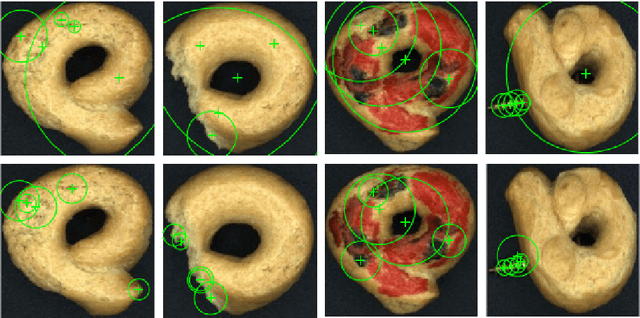

Abstract:In this paper, we suggest a way, how to use SIFT and SURF algorithms to extract the image features for anomaly detection. We use those feature vectors to train various classifiers on a real-world dataset in the semi -supervised (with a small number of faulty samples) manner with a large number of classifiers and in the one-class (with no faulty samples) manner using the SVDD and SVM classifier. We prove, that the SIFT and SURF algorithms could be used as feature extractors, that they could be used to train a semi-supervised and one-class classifier with an accuracy around 89\% and that the performance of the one-class classifier could be comparable to the semi-supervised one. We also made our dataset and source code publicly available.
Feature space reduction as data preprocessing for the anomaly detection
Mar 13, 2022


Abstract:In this paper, we present two pipelines in order to reduce the feature space for anomaly detection using the One Class SVM. As a first stage of both pipelines, we compare the performance of three convolutional autoencoders. We use the PCA method together with t-SNE as the first pipeline and the reconstruction errors based method as the second. Both methods have potential for the anomaly detection, but the reconstruction error metrics prove to be more robust for this task. We show that the convolutional autoencoder architecture doesn't have a significant effect for this task and we prove the potential of our approach on the real world dataset.
* 27th Conference STUDENT EEICT 2020, Brno University of Technology
Visual diagnosis of the Varroa destructor parasitic mite in honeybees using object detector techniques
Feb 26, 2021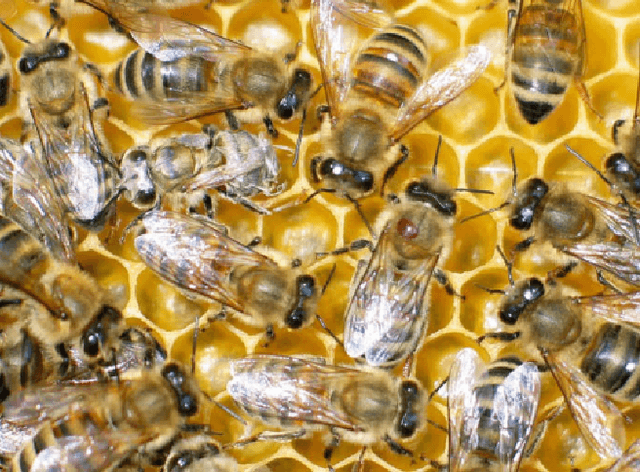
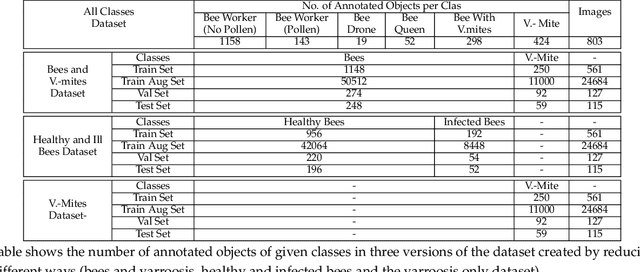
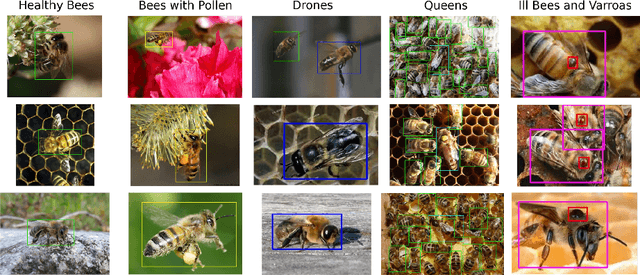
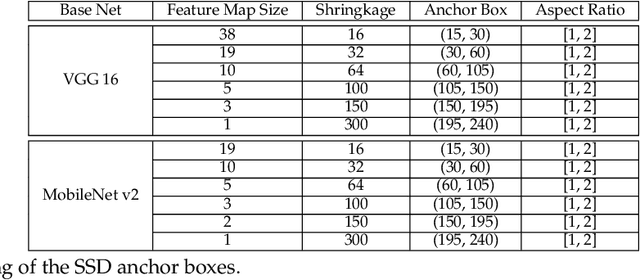
Abstract:The Varroa destructor mite is one of the most dangerous Honey Bee (Apis mellifera) parasites worldwide and the bee colonies have to be regularly monitored in order to control its spread. Here we present an object detector based method for health state monitoring of bee colonies. This method has the potential for online measurement and processing. In our experiment, we compare the YOLO and SSD object detectors along with the Deep SVDD anomaly detector. Based on the custom dataset with 600 ground-truth images of healthy and infected bees in various scenes, the detectors reached a high F1 score up to 0.874 in the infected bee detection and up to 0.727 in the detection of the Varroa Destructor mite itself. The results demonstrate the potential of this approach, which will be later used in the real-time computer vision based honey bee inspection system. To the best of our knowledge, this study is the first one using object detectors for this purpose. We expect that performance of those object detectors will enable us to inspect the health status of the honey bee colonies.
Discovering Imperfectly Observable Adversarial Actions using Anomaly Detection
Apr 22, 2020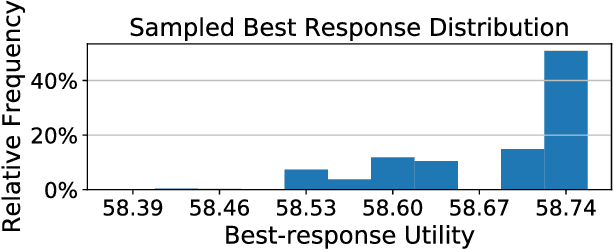

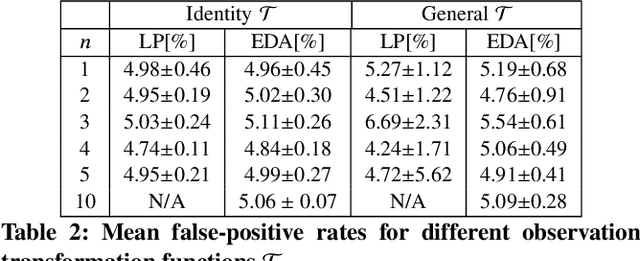

Abstract:Anomaly detection is a method for discovering unusual and suspicious behavior. In many real-world scenarios, the examined events can be directly linked to the actions of an adversary, such as attacks on computer networks or frauds in financial operations. While the defender wants to discover such malicious behavior, the attacker seeks to accomplish their goal (e.g., exfiltrating data) while avoiding the detection. To this end, anomaly detectors have been used in a game-theoretic framework that captures these goals of a two-player competition. We extend the existing models to more realistic settings by (1) allowing both players to have continuous action spaces and by assuming that (2) the defender cannot perfectly observe the action of the attacker. We propose two algorithms for solving such games -- a direct extension of existing algorithms based on discretizing the feature space and linear programming and the second algorithm based on constrained learning. Experiments show that both algorithms are applicable for cases with low feature space dimensions but the learning-based method produces less exploitable strategies and it is scalable to higher dimensions. Moreover, we use real-world data to compare our approaches with existing classifiers in a data-exfiltration scenario via the DNS channel. The results show that our models are significantly less exploitable by an informed attacker.
 Add to Chrome
Add to Chrome Add to Firefox
Add to Firefox Add to Edge
Add to Edge